Understanding the 60V 20Ah Lithium Battery A Comprehensive Guide
Comprehensive Guide to the 60V 20Ah Lithium Battery
The 60V 20Ah lithium battery has emerged as a pivotal component in modern electric mobility and energy storage solutions. With its high energy density, robust performance, and versatility, this battery type is increasingly favored in applications ranging from electric scooters to renewable energy systems. In this comprehensive guide, we delve into the specifications, applications, advantages, and maintenance practices associated with the 60V 20Ah lithium battery, providing you with the essential knowledge to make informed decisions.
- Understanding the 60V 20Ah Lithium Battery
- Applications of the 60V 20Ah Lithium Battery
- Advantages of the 60V 20Ah Lithium Battery
- Safety Features of the 60V 20Ah Lithium Battery
- Charging and Maintenance of the 60V 20Ah Lithium Battery
- Comparing the 60V 20Ah Lithium Battery to Other Battery Types
- Purchasing Considerations for the 60V 20Ah Lithium Battery
- Environmental Impact of the 60V 20Ah Lithium Battery
- Future Developments in 60V 20Ah Lithium Battery Technology
- The 60V 20Ah Lithium Battery in Modern Applications
Understanding the 60V 20Ah Lithium Battery
What Is a 60V 20Ah Lithium Battery?
A 60V 20Ah lithium battery is a rechargeable power source that delivers 60 volts of nominal voltage and a capacity of 20 ampere-hours. This configuration results in a total energy storage of approximately 1,200 watt-hours (Wh), making it suitable for high-demand applications. The battery typically employs lithium-ion chemistry, such as Nickel Manganese Cobalt (NMC) or Lithium Iron Phosphate (LiFePO₄), offering a balance between energy density, safety, and longevity.
Key Specifications
Nominal Voltage: 60V
Capacity: 20Ah
Energy Storage: Approximately 1,200Wh
Cycle Life: Up to 2,000 cycles, depending on usage and maintenance
Charging Voltage: Typically up to 71.4V
Discharge Cut-off Voltage: Around 40.5V
Weight: Varies between 6.5 kg to 9 kg, depending on the manufacturer and design
Applications of the 60V 20Ah Lithium Battery
Electric Vehicles
The 60V 20Ah lithium battery is widely used in electric scooters, motorcycles, and bicycles. Its high energy density allows for extended travel ranges, making it ideal for urban commuting and recreational use.
Renewable Energy Storage
In solar and wind energy systems, this battery serves as an efficient storage solution, capturing excess energy generated during peak production times and releasing it when needed. Its ability to handle deep discharge cycles makes it suitable for off-grid applications.
Industrial Equipment
Automated Guided Vehicles (AGVs), forklifts, and other industrial machinery benefit from the consistent power output and quick charging capabilities of the 60V 20Ah lithium battery, enhancing operational efficiency.
>>See also What You Should Know About DC Batteries
Advantages of the 60V 20Ah Lithium Battery
High Energy Density
Compared to traditional lead-acid batteries, lithium batteries offer a higher energy-to-weight ratio, allowing for more compact and lightweight designs without compromising performance.
Long Cycle Life
With proper maintenance, the 60V 20Ah lithium battery can achieve up to 2,000 charge-discharge cycles, translating to several years of reliable service.
Fast Charging
These batteries support rapid charging protocols, reducing downtime and increasing productivity, especially in commercial and industrial settings.
Low Self-Discharge Rate
Lithium batteries have a low self-discharge rate, retaining their charge over extended periods when not in use, which is advantageous for backup power applications.
Safety Features of the 60V 20Ah Lithium Battery
Battery Management System (BMS)
A critical component, the BMS monitors and manages the battery's performance, ensuring safe operation by preventing overcharging, over-discharging, and overheating. Advanced BMS units may also offer real-time data monitoring and diagnostics.
Certifications and Compliance
Reputable manufacturers ensure their batteries meet international safety standards, such as:
UL 1973: Safety standard for stationary batteries
CE Certification: Compliance with European safety directives
UN 38.3: Transportation safety standard for lithium batteries
Charging and Maintenance of the 60V 20Ah Lithium Battery
Charging Practices
Use Compatible Chargers: Always use chargers designed for 60V lithium batteries to prevent damage.
Avoid Overcharging: Disconnect the charger once the battery reaches full charge to extend its lifespan.
Charge in Moderate Temperatures: Extreme temperatures can affect charging efficiency and battery health.
Maintenance Tips
Regular Inspection: Check for signs of wear, corrosion, or damage.
Clean Terminals: Keep battery terminals clean to ensure optimal conductivity.
Proper Storage: Store the battery in a cool, dry place at approximately 50% charge if not in use for extended periods.
Comparing the 60V 20Ah Lithium Battery to Other Battery Types
Versus Lead-Acid Batteries
Weight: Lithium batteries are significantly lighter, enhancing mobility.
Cycle Life: Longer lifespan reduces the frequency of replacements.
Maintenance: Lithium batteries require less maintenance, as they do not need regular water refilling.
Versus Other Lithium Configurations
While other lithium battery configurations exist, the 60V 20Ah variant offers a balanced combination of voltage and capacity, making it versatile for various applications without the need for complex battery management.
>>See also Understanding the Key Differences Between LTO and LFP Batteries
Purchasing Considerations for the 60V 20Ah Lithium Battery
Quality of Cells
Opt for batteries using high-quality cells from reputable manufacturers, such as Samsung or LG, to ensure reliability and performance.
Warranty and Support
Choose suppliers that offer comprehensive warranties and customer support to address any potential issues during the battery's lifespan.
Application Compatibility
Ensure the battery's specifications align with your device's requirements, including voltage, capacity, and physical dimensions.
Environmental Impact of the 60V 20Ah Lithium Battery
Lithium batteries are more environmentally friendly than lead-acid counterparts due to their longer lifespan and higher efficiency. However, responsible recycling at the end of their service life is crucial to minimize environmental impact.
Future Developments in 60V 20Ah Lithium Battery Technology
Advancements in battery technology continue to enhance the performance and safety of lithium batteries. Research focuses on increasing energy density, reducing charging times, and improving thermal management systems. These developments promise to expand the applications and efficiency of the 60V 20Ah lithium battery in the coming years.
The 60V 20Ah Lithium Battery in Modern Applications
The 60V 20Ah lithium battery stands out as a reliable, efficient, and versatile power source across various sectors. Its high energy density, long cycle life, and low maintenance requirements make it an excellent choice for electric vehicles, renewable energy storage, and industrial equipment. By understanding its specifications, applications, and maintenance practices, users can maximize the benefits of this advanced battery technology.

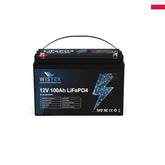
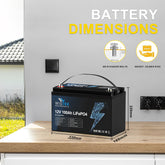

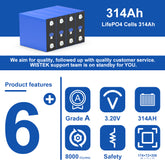


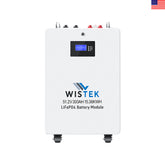
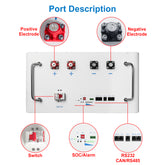
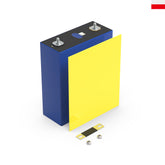

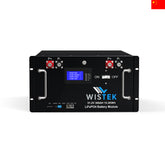
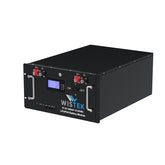
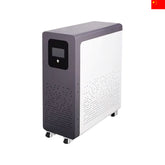

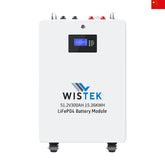
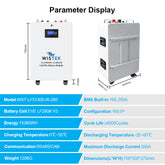
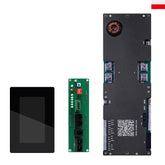

Leave a comment
All blog comments are checked prior to publishing